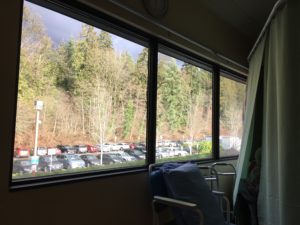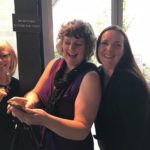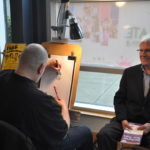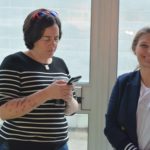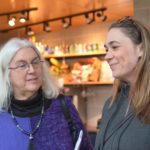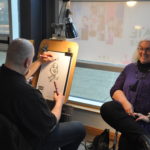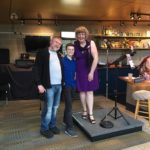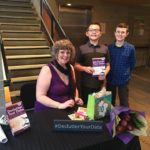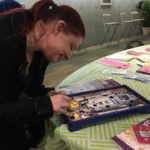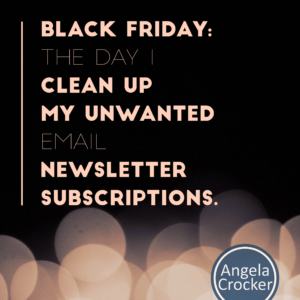My Digital Lifelines
Hi. I’m back. You might not have noticed I was mostly offline over the last couple months. That’s okay. Thankfully, my digital lifelines helped me through.
I had surgery in December and have spent the last few weeks healing. It’s been a long haul but, happily, my surgeon gave me the all clear and physiotherapy is going well. I’ve got some work to do to regain my strength, flexibility, and balance. Given time, I’ll be physically better than I have been in years. Hurrah! Thankfully, I’m not concerned about my mental wellness thanks, in part, to my digital family who kept me connected through digital lifelines.
Six Weeks of Rest
Six weeks is a long time to convalescence. In the early stages, it’s about pain management and distraction. Digital helped. After a while, it’s about filling the gaps between naps when your energy is low and your brain is foggy. Digital helped some more. Towards the end, healing is a mental game where you have to overcome the urge to do too much. Digital became part of my coping strategy then, too.
Analog was a big part of my healing process, too. Good food, sleep, movement – the basics of healthy living. Cuddles with my son, in-person visitors, and offline activities also filled my days. But my digital lifelines made the days less lonely and helped pass the time.
Priority Communication
At first, in hospital, it’s about communication and then comfort. And this part requires some preparation. When my husband brought my overnight bag to me post-surgery, it contained my mobile phone, headphones, a fully charged battery and a charging cable. I had a minimal amount of technology in hopes that my things wouldn’t be stolen from my hospital room. The headphones, battery, and charging cable could easily be replaced; my iPhone not so much but I felt the benefit of staying connected outweighed the risk of theft.
I’d decided, in advance, that I would only connect with four people – my husband, my son, my Dad, and my sister-in-law. They could spread any news to close family and friends. They were the core branches of my digital “phone tree” although I don’t think they made many phone calls relying instead on text messages.
I wasn’t sure how my brain would behave post-anesthetic and on pain medication, so I limited my communication to people who would forgive me if I said something rude or stupid or hurtful. The internet never forgets and I live part of my life online everyday. The adage “if you haven’t got something nice to say; don’t say anything” seemed like a good approach and if I didn’t say anything on social media or email then I wouldn’t create a problem I’d have to unravel later.
Digital Comfort
Beyond basic communication, my mobile phone was a terrific comfort. The regular hubbub of a post-surgical ward is a noisy place and I shared my room with three noisy roommates. The woman next to me snored like a champion. One man across the aisle kept tripping his bed alarm – over and over. The fourth patient in our quartet was shouting abuse and complaints at the nursing staff, especially at night. Sigh… so much noise.
While I had a room with a view, the change in sunlight and the wind in the trees was only entertaining for a while. I was grateful to have a window but…
Fortunately, I’d planned ahead by downloading audio books, music, and podcasts so that I could use my earbuds as ear plugs and create my own soundscape. To save battery life, I kept my phone in airplane mode most of the time. And I made sure my phone was silent! My corner of the ward did not add any beeps or vibrations to the cacophony. (I try to live by the advice in Declutter Your Data where I wrote about digital distractions and turning off notifications.)
Two Types of Digital Distractions
As I recuperated, I realized that digital distractions come in two forms. I was most familiar with the annoying and unproductive distractions that keep me from focusing on my work. However, there is a second type of distraction – a welcome element in my digital lifelines.
For me, those welcome distractions included endless amusement. Streaming TV shows and movies was wonderful. I caught up on my Netflix playlist and bought a bunch of shows on iTunes. (Of course, there was a day of reckoning when my credit card bill arrived but I think it was was money well spent.)
When I wasn’t watching something, I was reading. I particularly enjoy the magazines in my Texture subscription. For a monthly fee, I have access to dozens of magazines – the latest issues and a copious backlist. I read my usual favorites – Hello Canada, Entertainment Weekly, Adweek, Chatelaine, and more. But I also used this time to read new-to-me magazines – Birds & Blooms, Reminisce, Magnolia Journal, and others.
And when I wasn’t reading magazines, I read social media – mostly Facebook and Instagram. But I was reading, not posting, for the most part.
Asynchronous Connections
I experienced some wacky sleep patterns over the last few weeks. Long sleeps at night and long naps during the day meant I was awake at odd hours. Once again, digital lifelines came to my rescue. Social media and chat apps like Facebook Messenger, WhatsApp, and Marco Polo allowed my friends and I to post and comment when it suited our schedules. This asynchronous communication meant I could share my thoughts with my BFFs at 3am knowing that they would see them and respond at a more civilized hour. Happily, my Dad is an early riser so he was a constant comfort in the wee hours. (Thanks, Dad! oxo)
Best of all was the visits. Some local friends were able to stop by for a visit in person. (If my friend, Shelley, ever offers you her spiced pecans, say YES! So good!) But, mostly, my visits where through video chat. I’m especially grateful for the laughter-filled video chats with my pals, Kim and Peggy. Although, I don’t recommend laughing that much with stitches in your belly. Ouch.
Technology is a great way to stay in touch with family members in your home, too. My husband and I have home offices well away from our bedroom and living room. A quick text to ask for help let him be there for me but also kept him at work. Similarly, my video game loving son could be summoned with a quick text – don’t forget the emojis!
Text messages and video chat with individuals and small groups create vital digital lifelines. I was alone but not forgotten. I was lonely at times but did not struggle with loneliness.
Digital Lifelines Matter
While a lot of my work has to do with digital living, I became acutely aware of the importance of digital lifelines. The relationships we nurture online and offline over months and years can sustain us through the tough times, like surgery and other big life events.
Thank you to my digital family for keeping me connected these last few weeks. Much appreciated. See you online (and offline) again soon.

